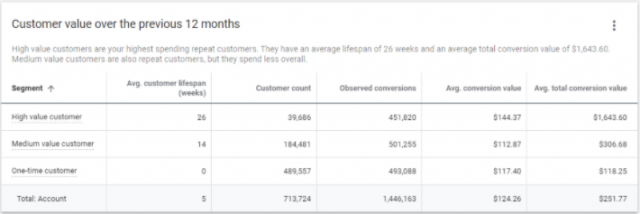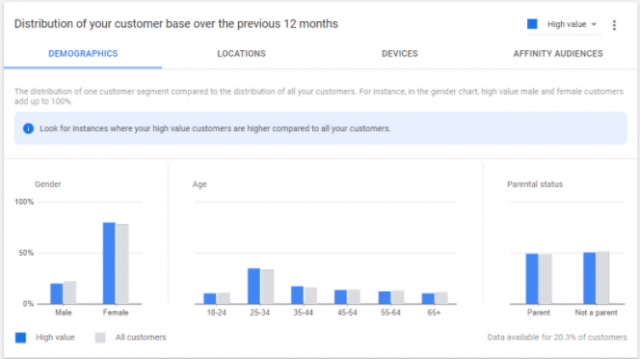October 8, 2021
The Ideal QA Process in Digital Advertising
If you use Google Ads frequently, then you know the platform is constantly evolving. From automated bidding strategies to innovative ad formats, there’s always a new lever to pull. One tool in particular that may have flown in under your radar is Google’s new Customer Value feature.
Google Ads’ Customer Value aggregates and anonymizes data for ecommerce advertisers to identify the profile of customers that purchase more or more frequently. It consolidates value-focused customer insights into a single dashboard, making it easier to look at customer value by age, gender, or audience characteristics.
Lifetime value is a metric we spend a lot of time evaluating at Metric Theory. From interpreting B2B back-end data to analyzing e-commerce revenue directly, we believe a value-focused approach is the best way to measure return on ad spend and drive long-term success for our clients. Many of our optimizations involve audience targeting, but unless our clients have set up sophisticated back-end tracking, we don’t have direct insight into the full picture for repeat customers. Google’s Customer Value tool provides immediate insight even for advertisers without a way to feed that data to us.
You can find the Customer Value tool in “Tools & Settings,” underneath “Measurement.”

If you don’t see it listed as in the screenshot, your account may not be eligible. To access it, you’ll need to have a global site tag placed and be capturing purchase conversions with associated revenue. Google also says the account needs to be tracking this revenue for at least 15 months and meet an undefined conversion volume requirement. As of this writing, offline conversions, API conversions, and conversion adjustments are not supported.
Here’s how Google defines its three customer segments:
The first dashboard in the “Customer Value” tool summarizes data over the previous 12 months, making it clear why high-value customers are worth pursuing. In the example below, for instance, you’ll see that high-value customers are the smallest segment by volume but drive the highest revenue per user by a wide margin: 1,290% greater than that of a one-time customer.

Next, Google provides the distribution of your customer base. If you’re used to analyzing demographics and audience characteristics separately, this view will be a meaningful time-saver, consolidating multiple segments into a straightforward interface. Looking at demographics, you’ll notice this client’s high-value customers skew female and ages 25-44, but parental status doesn’t make a significant difference.

Lastly, Google provides insights into customer behavior across time periods: one month or 12 months. This view helps us understand the impact of short-term vs. long-term optimizations, as one-time customers actually drive greater value when only considering a single month of revenue. That said, over a 12-month period, all three of these segments represent a considerable amount of business, with high-value customers ultimately driving the greatest share of revenue.

For Google accounts optimizing toward purchases and revenue, “Customer Value” should simplify the process of identifying high-value segments within your target audience. Furthermore, this tool is one of the first in-platform offerings to provide insights into repeat customer behavior, illustrating the long-term importance of your audience optimizations.
For more help with Google Ads and generating value from your digital marketing initiatives, subscribe to our newsletter or contact us.
